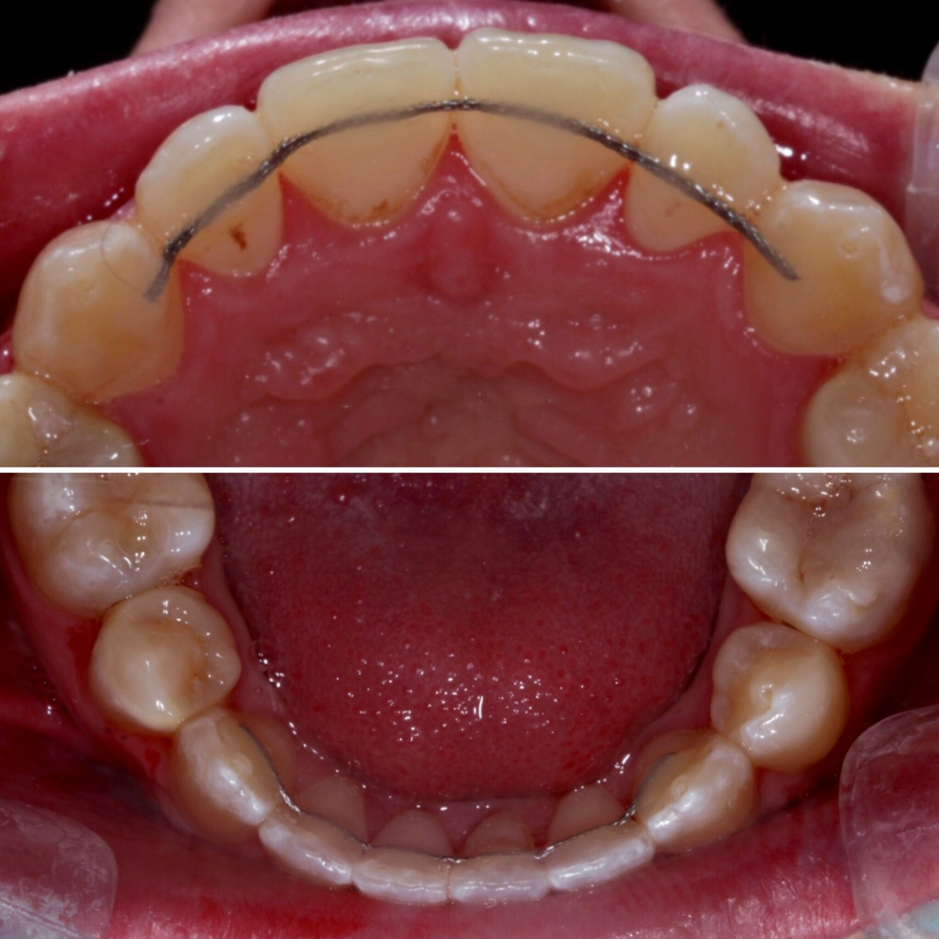Your teeth have straightened after years of wearing braces, but now you may be wondering how to maintain the results. A permanent retainer is an orthodontic device that is bonded to the back of your teeth to prevent them from shifting back to their previous positions. While permanent retainers are generally durable, they can occasionally break or become loose, requiring repair or replacement. In this comprehensive guide, we will explore the various methods for fixing a permanent retainer, providing you with the information you need to restore your smile and maintain your dental health.

Image: drlarsen.com
Understanding Permanent Retainers
Permanent retainers, also known as fixed retainers, are thin wires that are bonded to the lingual (inner) side of the teeth from canine to canine. They are typically made of stainless steel or titanium and are designed to keep your teeth in their post-treatment positions, preventing relapse. Unlike removable retainers, permanent retainers are not taken out for daily cleaning or eating, which can make them a convenient option for individuals who prefer a less visible orthodontic solution.
Common Causes of Broken or Loose Permanent Retainers
Permanent retainers are generally durable, but they can break or become loose due to various factors. Some of the most common causes include:
• Biting into hard foods or objects, such as ice or candy
• Using your teeth to open packages or cut items
• Playing contact sports without a mouthguard
• Accidents or trauma
• Natural wear and tear over time
Fixing a Broken or Loose Permanent Retainer
If your permanent retainer breaks or becomes loose, it is important to seek professional dental care as soon as possible. An experienced dentist can assess the damage and recommend the best course of treatment. Depending on the severity of the issue, there are several different methods that can be used to fix a permanent retainer.
• Rebonding: If the retainer is still intact but has become loose, a dentist can simply rebond it to your teeth using dental adhesive. This is a quick and relatively simple procedure that can be done in a single dental visit.
• Soldering: If the retainer has broken into multiple pieces, it may be possible to solder the pieces back together. Soldering involves melting a metal alloy to join the pieces of the retainer, making it as strong as before.
• Replacement: In some cases, the retainer may be beyond repair and need to be replaced. If the retainer cannot be fixed, the dentist will remove the old one and bond a new retainer in its place.

Image: jag-en-ligne.com
Cost of Repairing or Replacing a Permanent Retainer
The cost of repairing or replacing a permanent retainer can vary depending on several factors, such as the severity of the damage, the type of repair required, and the location of the dental practice. The average cost of rebonding a loose retainer ranges from $50 to $150, while soldering a broken retainer can cost between $150 and $300. Replacing an entire retainer typically costs between $300 and $800. It is important to note that these costs may vary from practice to practice, and it is always advisable to consult with your dentist to determine the exact cost.
How To Fix Permanent Retainer
Prevention and Maintenance
To prevent having to fix a permanent retainer, there are a few simple precautions you can take:
• Avoid biting into hard foods or objects.
• Use your teeth only for chewing food and speaking.
• Wear a mouthguard during contact sports to protect your teeth.
• Brush and floss your teeth regularly to maintain good oral hygiene and prevent decay.
• Visit your dentist for regular checkups to ensure that your retainer is in good condition and make any necessary adjustments.
By following these preventive measures and promptly addressing any issues, you can ensure the longevity of your permanent retainer and maintain a healthy, beautiful smile.